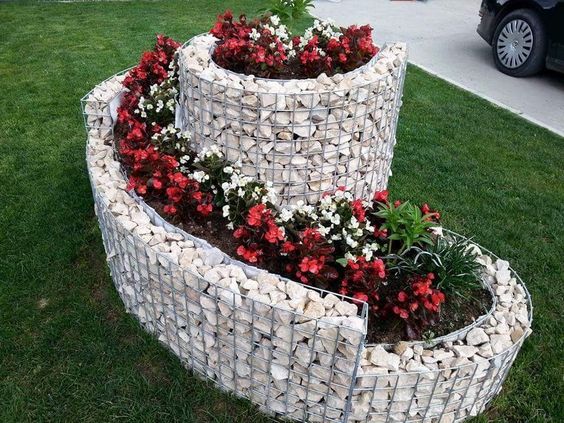The Materials
- Gravel or landscaping cloth. Choose a material that drains well but inhibits weed growth.
- The structure. Select a barrier for your edges. This can be anything that will contain your soil. Large rocks, stones, logs, patio bricks, and cement blocks are all good examples.
- Soil. Most herbs prefer a sandier well-draining soil. You can also create layers of straw, leaves, compost, and greens similar to the lasagna-style gardens.
- A wheelbarrow. This is used for moving the soil and stones to the site location.
- Shovels. Gather both a regular spade and a small garden trowel for planting.
- Gardening gloves to protect your hands.
- String and a stake to layout the circular form of the structure.
Step by Step Instructions to Build The Spiral
Now that you have decided on the primary materials, you will build your spiral. Here is the easiest way to get it done:- On a piece of paper, draw out how you would like your spiral to look and the size.
- Take the stake you have and pound it into the ground at the center of where your herb spiral will be.
- Measure out a piece of string or rope to the size you would like to make your spiral.
- A good size is a meter or yard from the center stake. This will make a great smaller spiral with a diameter of six feet.
- Once you have the size and marked it out on the ground, cover the area needed with gravel or cut-out landscape cloth.
- Start to place your bricks or stones (whatever material you have chosen). Remember, this is an upward spiral, so you will be increasing the height of your material in increments. A good ratio is for every two bricks you lay flat, go up one.
- Keep space open at the end of the circle. This will be the start of your ramp for the spiral and allows the water to drain freely.
- Form the next inner circle with your bricks or material. You will go about double the height as your outer circle of bricks.
- Create the inner circle using the same ratio as your outer circle two across one up.
- Once you have done 360 degrees of your first level, it’s time to add your soil, mulch, and compost.
- I find it best to use the mulch at the bottom then covering it with soil. This will give your herbs a great start with a good nitrogen fix. If you don’t have a lot of mulch, you can use rotten old wood or twigs as filler below your soil.
- Using filler saves you a lot of money if you are buying your topsoil or substrate. Herbs do not need deep soil to flourish.
























